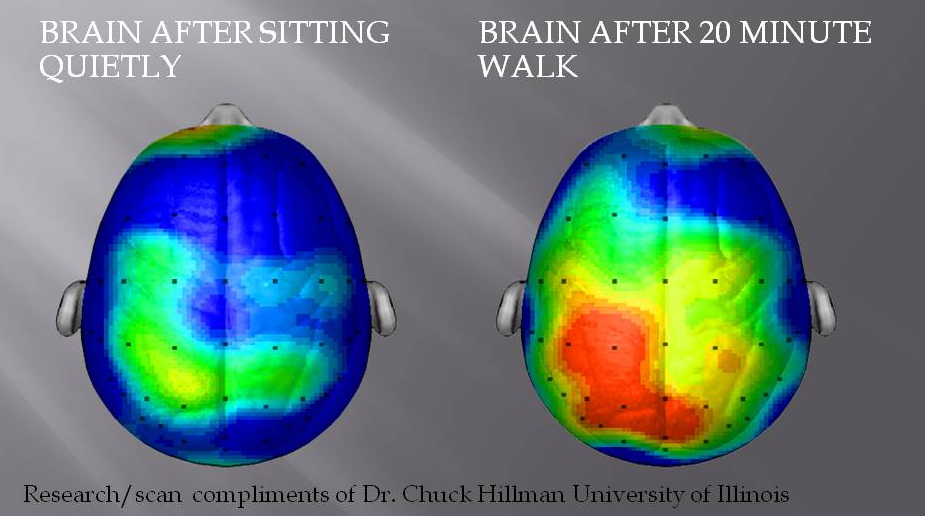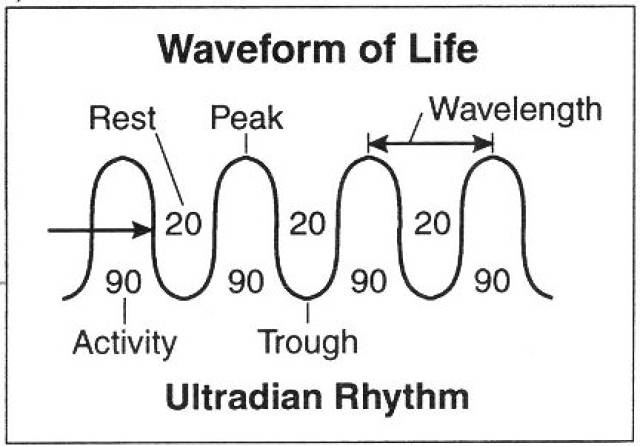I know you don’t want to take a break right now.
Why? Because you’re too busy. This post is probably one of more than a few tabs you have open on your browser or phone. Your to-do list is likely close by and packed with tasks.
Sometimes we know there’s a better way to do things, but we’re just so busy we don’t even think we have the time to find it—so we keep going like we always have.
That’s how I saw things, too. And then I discovered the power of taking breaks at work. They made me happier, more focused and more productive—and I bet they can do the same for you, whether you’re in the corner office or a cubicle.
Come along and discover the science of why we need breaks at work, how to create your own master schedule and what to do on your hard-earned break.

3 scientific reasons to prioritize breaks at work
1. Breaks keep us from getting bored (and thus, unfocused)
When you’re really in the groove of a task or project, the ideas are flowing and you feel great. But it doesn’t last forever—stretch yourself just a bit beyond that productivity zone and you might feel unfocused, zoned out or even irritable. What changes?
Basically, the human brain just wasn’t built for the extended focus we ask of it these days. Our brains are vigilant all the time because they evolved to detect tons of different changes to ensure our very survival. So focusing so hard on one thing for a long time isn’t something we’re ever going to be great at (at least for a few centuries).
The good news is that the fix for this unfocused condition is simple—all we need is a brief interruption (aka a break) to get back on track.
University of Illinois psychology professor Alejandro Lleras explains:
“…Deactivating and reactivating your goals allows you to stay focused,” he said. “From a practical standpoint, our research suggests that, when faced with long tasks (such as studying before a final exam or doing your taxes), it is best to impose brief breaks on yourself. Brief mental breaks will actually help you stay focused on your task!”
2. Breaks help us retain information and make connections
Our brains have two modes: the “focused mode,” which we use when we’re doing things like learning something new, writing or working) and “diffuse mode,” which is our more relaxed, daydreamy mode when we’re not thinking so hard. You might think that the focused mode is the one to optimize for more productivity, but diffuse mode plays a big role, too.
In fact, although our brains were once thought to go dormant when we daydreamed, studies have shown that activity in many brain regions increases when our minds wander. Here’s a look at the brain scan of one daydreamer:
Some studies have shown that the mind solves its stickiest problems while daydreaming—something you may have experienced while driving or taking a shower. Breakthroughs that seem to come out of nowhere are often the product of diffuse mode thinking.
That’s because the relaxation associated with daydream mode “can allow the brain to hook up and return valuable insights,” engineering professor Barbara Oakley explained to Mother Jones.
“When you’re focusing, you’re actually blocking your access to the diffuse mode. And the diffuse mode, it turns out, is what you often need to be able to solve a very difficult, new problem.”
3. Breaks help us reevaluate our goals
The Harvard Business Review examines another prime benefit of breaks: they allow us to take a step back and make sure we’re accomplishing the right things in the right way.
When you work on a task continuously, it’s easy to lose focus and get lost in the weeds. In contrast, following a brief intermission, picking up where you left off forces you to take a few seconds to think globally about what you’re ultimately trying to achieve. It’s a practice that encourages us to stay mindful of our objectives…
How to stop feeling guilt about breaks
OK, so we know taking breaks is a scientifically proven method for regaining our focus, sharpness and motivation. But taking a walk or a reading break in the middle of a workday? Can we really get over how guilty that’ll make us feel?
A study of office workers and managers by Staples discovered that even though 66 percent of employees spend more than eight hours a day at work, more than a quarter of them don’t take a break other than lunch. One in five employee respondents said guilt was the reason they don’t step away from their workspaces.
And that’s with 90 percent of the bosses surveyed saying that they encouraged breaks and 86 percent of employees agreeing that taking breaks makes them more productive! It’s become normal to think that if you never take a break from work, you’ll get more done, get promoted and be more successful.
“When demand in our lives intensifies, we tend to hunker down and push harder,” says Tony Schwartz, head of New York City-based productivity consulting firm The Energy Project. “The trouble is that, without any downtime to refresh and recharge, we’re less efficient, make more mistakes, and get less engaged with what we’re doing.”
Here’s how Tim Kreider describes breaks in The New York Times:
“Idleness is not just a vacation, an indulgence or a vice; it is as indispensable to the brain as vitamin D is to the body, and deprived of it we suffer a mental affliction as disfiguring as rickets…It is, paradoxically, necessary to getting any work done.”
If all that doesn’t convince you, then consider the clientele of the aforementioned Schwartz at The Energy Project, which is designed to help companies to help them find a better way to work—including breaks. He counts Google, Apple, Facebook, Coca-Cola, Green Mountain Coffee, Ford, Genentech and a wide range of Fortune 500 companies as clients. Sounds like good company!
Four break methods to try
Ready to try breaks at work but not sure how to implement your schedule? Here are a few methods you might consider.
1. Pomodoro method
One of the most common ways to implement a schedule with breaks—especially when you’re busy—is to work in small bursts. The Pomodoro Technique is perfect for this. Just set a timer for 25 minutes, and when it goes off, take a short break for 5 minutes. Stretch your legs, grab a drink, or just sit back and relax. After you’ve done four Pomodoro sessions, take a longer break of 30 minutes or so.
Working in such compact time periods helps you get rid of distractions and focus more intently. I found that having a finite beginning and end to each chunk of work gave me a little edge of urgency–I closed out tasks more quickly and made the “little decisions” faster because I knew the clock was counting down.
2. 90-minute work blocks
Want more time to dig in? Working in 90-minute intervals has long been a favorite method of maximizing productivity because it works with our bodies’ natural rhythms.
Sleep researchers William Dement and Nathan Kleitman first discovered the 90-minute pattern while studying the cycles by which we progress into sleep—but it persists when we’re awake, too, as we move from higher to lower levels of alertness. Other researchers have dubbed this the ultradian rhythm.
When Professor K. Anders Ericsson studied elite performers like violinists, athletes, actors and chess players, he found that the best performers practiced in focused sessions of no more than 90 minutes.
“To maximize gains from long-term practice,” Dr. Ericsson concluded, “individuals must avoid exhaustion and must limit practice to an amount from which they can completely recover on a daily or weekly basis.”
3. The 52-17 method
A third option: split the difference between Pomodoro and 90-minute blocks with what recent research indicates could be the most productive schedule of all.
Using time-tracking and productivity app DeskTime, the Draugiem Group studied the habits of the most productive employees and learned that the most productive people work for 52 minutes at a time, then break for 17 minutes before getting back to it. The bottom line, they discovered, was working with purpose:
The reason the most productive 10% of our users are able to get the most done during the comparatively short periods of working time is that their working times are treated as sprints. They make the most of those 52 minutes by working with intense purpose, but then rest up to be ready for the next burst. In other words, they work with purpose.
4. Two 15-minute breaks per day
If a time-blocked day doesn’t appeal to you or work with your job, consider a simpler but still quite effective solution: blocking out two planned, 15-minute intermissions in your day—one in the mid-morning and the other in the mid-afternoon.
Around 3 p.m. is the least productive time of the day, so definitely don't skip that break!
16 productivity-boosting activities for your break
So you’ve realized the importance of breaks and added them into your day—hooray! Now: How to spend your well-deserved break? Here are a few suggestions, each with proven benefits!
Take a walk
A 20-minute stroll can increase blood flow to the brain, which can boost creative thought. Regular walks can enhance the connectivity of important brain circuits, combat age-related declines in brain function and improve memory and cognitive performance.

Daydream
Daydreaming “leads to creativity, and creative activities teach us agency, the ability to change the world, to mold it to our liking, to have a positive effect on our environment.”
Eat
Replenish your brain with a snack–here’s a look at some brain- and productivity-nourishing foods to grab.
Read
Read a (non-work) book–especially fiction. Studies have shown that individuals who frequently read fiction are better able to understand other people, empathize with them and see the world from their perspective.
Get a coffee
OK, you probably already thought of this break option. But are you timing your coffee breaks correctly? For people who wake up between 6 a.m. and 8 a.m., the optimal times for consuming caffeine fall somewhere around 9:30 a.m. to 11:30 a.m. and 1:30 p.m. to 5:30 p.m.
Doodle
Let your mind wander as you put pen to paper for some creative free time. Research shows that doodling can stimulate new ideas and help us stay focused.
Look at adorable animal photos
In one awesome study, participants performed better on a variety of tasks after looking at baby animal photos. Only baby animals will do the trick here–full-grown animal pics didn’t have the same effect.

Listen to music
Focusing on music can significantly improve our motor and reasoning skills, and it has a variety of health benefits as well.
Nap
If your workplace is super progressive, you can enjoy tons of benefits from even the tiniest midday nap. A nap of even 10 minutes has been shown to improve cognitive function and decrease sleepiness and fatigue.
When pilots were given a nap of 30 minutes on long flights, there was a 16 percent improvement in their reaction time. (Pilots who didn’t nap saw a a 34 percent decrease over the course of the flight.)
We’re big believers in naps at Buffer–you can catch a glimpse of the bunk beds for napping in Buffer’s office in this photo of Buffer founder Joel:

Exercise
Exercise can make you happier, give you more energy and help you gain focus. You can pack in a decent workout in under 10 minutes, and switching to a different kind of task give yours mind needed rest. Try the 7-minute workout, for example.
Talk to friends or coworkers
Yup, even hanging out with coworkers for a bit is a productive break! Research shows that talking with colleagues can increase your productivity. In a study of call center workers, those who talked to more co-workers were getting through calls faster, felt less stressed and had the same approval ratings as their peers.
Meditate
One of the most powerful ways to relax your brain in a short amount of time is a session of meditation.
In the image below you can see how the beta waves (shown in bright colors on the left) are dramatically reduced during meditation (on the right).

Meditation lowers stress levels and improves overall health as well as creativity. (We’ve got a virtual meditation room at Buffer).
Plan something fun
Like a future trip or vacation. Research shows that anticipating a trip often makes people happier than the trip itself.
Go outside and see some nature
On a nice day, spend some time outside during your break–and try to find more natural and less urban settings. Spending time in nature is good for your immune system and has been shown to improve focus and relieve stress.
Exercise your eyes
Especially if you look at a screen most of the day, your eyes could use a break. Use the 20-20-20 rule: Every 20 minutes, take a break for at least 20 seconds and look at objects that are 20 feet away from you.
Mess around online
That’s right; go ahead and check your Facebook account or take that Buzzfeed quiz. Studies have shown that goofing off online for a few minutes can be just as productive a break as any other (and better than texting or sending emails) when it comes to refreshing your brain.
Do you take breaks regularly during the day? If so, what’s your schedule like and how do you use your break time? I’d love to hear from you in the comments!
Image credits: Science Daily, A Year of Productivity, Fast Company, Dr. Chuck Hillman, PLOS One, The Guardian, Suzanne Morgan Yoga
Try Buffer for free
140,000+ small businesses like yours use Buffer to build their brand on social media every month
Get started nowRelated Articles

TikTok's parent company must divest the app or face a ban in the U.S. Here's everything we know, plus how to plan ahead.

How the Buffer Customer Advocacy Team set up their book club, plus their key takeaways from their first read: Unreasonable Hospitality by Will Guidara.

In this article, the Buffer Content team shares exactly how and where we use AI in our work.



